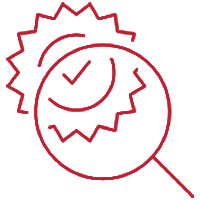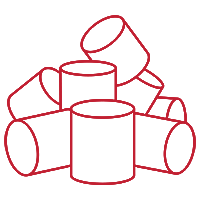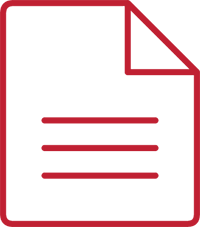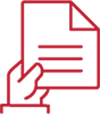
How Rite Aid built a best-in-class chemical management program
Learn how Rite Aid leverages artificial intelligence to evaluate the sustainability and chemical content of their products to curate, develop and sell safer and more sustainable products.

Rite Aid is one of the largest drugstore chains in the United States. In 2020, Rite Aid refreshed their brand and sought to place cleaner and healthier products at the forefront of their offerings. To achieve this objective, the Rite Aid team built a comprehensive chemical policy and product sustainability program and turned to UL Solutions’ expertise and PurView® software to support their effort. Today, Rite Aid’s best-in-class program strengthens their brand image, builds loyalty with new demographics and increases revenue one sustainable product at a time.
“Chemical management and compliance were an important part of Rite Aid’s RxEvolution,” said Amanda Patrick, director of ESG/corporate sustainability at Rite Aid. “As a company, we are focused on offering cleaner, greener products to a younger demographic while remaining the first choice of our legacy customer base.”
Currently, many consumers struggle to make sustainable purchases due to limited product availability and unsubstantiated health and environmental claims. Retailers seeking to meet this demand are eager to offer sustainable products, empower informed consumer purchasing and highlight their product stewardship efforts. However, many retailers lack the tools, expertise and resources to do so effectively.
“If you get to a point where you can match products to consumer preferences in a way that takes into account the chemical composition of the products, you have a very popular attribute that you are able to sell on.”
William Pease, chief sustainability scientist, UL Solutions
Rite Aid began their chemical policy journey by establishing their own restricted substance list focused on eliminating eight high-priority chemicals from private-label items: triclosan, formaldehyde, toluene, butylparaben, propylparaben, dibutyl phthalate, diethyl phthalate and nonylphenol ethoxylates. However, without the tools and processes to screen their products or to monitor their progress, Rite Aid earned only a D+ rating from Mind the Store Retail Report Card the following year. Rite Aid’s Mind the Store grade was much lower than expected, and the retailer responded immediately to increase their efforts and bolster their brand.
Rather than focusing simply on substances, Rite Aid strengthened their program by developing a chemical policy and establishing a Steering Committee to support and monitor the company’s efforts.
 |
Strategy
Prioritize Rite Aid’s private-label products and begin screening national brands. |
 |
Restricted substances
Expand the original list of eight substances to 69 substances based on consumer concern, a competitive assessment and Rite Aid’s product assortment. |
|
 |
Clear scope
Focus on formulated private-brand and national-brand products in three categories: health and beauty, personal care, and cleaning supplies. |
 |
Screening
Move from a survey-based approach to an automated assessment with UL Solutions WERCSmart®, with all private-label suppliers required to participate. |
|
 |
Transparency
Promote comprehensive ingredient disclosures through on-package labeling, in-store displays and online content. |
 |
Tracking and reporting
Track the elimination of the original eight identified substances as well as the newly added substances and monitor supplier compliance. |
To support the policy and larger brand transformation, Rite Aid worked with UL Solutions to redefine their chemical policy and develop a clear path for the future. UL Solutions experts guided Rite Aid toward a dedicated, organized approach to chemical management by maintaining an active role on Rite Aid’s Steering Committee.
While the steering committee ensures organizational alignment around chemical management, Rite Aid also requires a thorough and reliable way to collect and validate chemical and material attribute information to screen ingredients, source responsibly, and ultimately develop and sell cleaner products. Rite Aid implemented two UL Solutions systems, PurView® and WERCSmart®, to support the retailer’s sustainable products and chemicals policy.
PurView® simplifies product review and sourcing and provides unmatched chemical data analysis. “With PurView®, we have a system that lets retailers ask suppliers for consent to use their WERCSmart® data for chemical policy or product curation purposes,” Pease said. “When the supplier grants consent, we screen full product formulations for hazardous ingredients and highlight ingredients that do not meet Rite Aid’s chemical policy.” This allows Rite Aid to seamlessly evaluate and market products across categories, manage sustainability and source responsibly.
PurView® enables Rite Aid to share important information about material inputs and products with their partners across the supply chain. “We’re a very lean organization,” said Patrick, “so monitoring and tracking chemicals and suppliers is cumbersome, but PurView® streamlines our data collection process, and UL Solutions advisory support has been instrumental to our program.”
Today, Rite Aid has a best-in-class retail chemical policy program — a claim backed up by Mind the Store’s most recent retail report card score of Rite Aid’s program, achieving the top score among major drugstore retailers. The brand has reached its target, nearing 100% compliance for the elimination of chemicals of concern from all private-label products.
In the spirit of continuous improvement, Rite Aid will require suppliers of private-label products to disclose all generic ingredients by the end of 2023.
“We work closely with our partners at UL Solutions to help us evaluate and optimize our program. Currently, we’re focusing on expanding our efforts for ingredient transparency while also looking at environmental justice chemicals of concern that are typically found in products marketed to people of color.”
Amanda Patrick, Director of ESG/Corporate Sustainability, Rite Aid
The shift toward broader chemical management is poised to increase in scope over the coming years. As this happens and consumers become even more educated on the products they bring into their lives, retailers need reliable tools and policies to help them keep pace with customer expectations. UL Solutions’ PurView® platform supports these efforts by leveraging validated data, streamlining comprehensive chemical review processes, and eliminating the need to rely on manufacturer claims and attestations.
Contact UL Solutions today to learn how we can help you redefine the future of your chemical policy and product sustainability.

How Rite Aid built a best-in-class chemical management program
Thanks for your interest in our products and services. Let's collect some information so we can connect you with the right person.